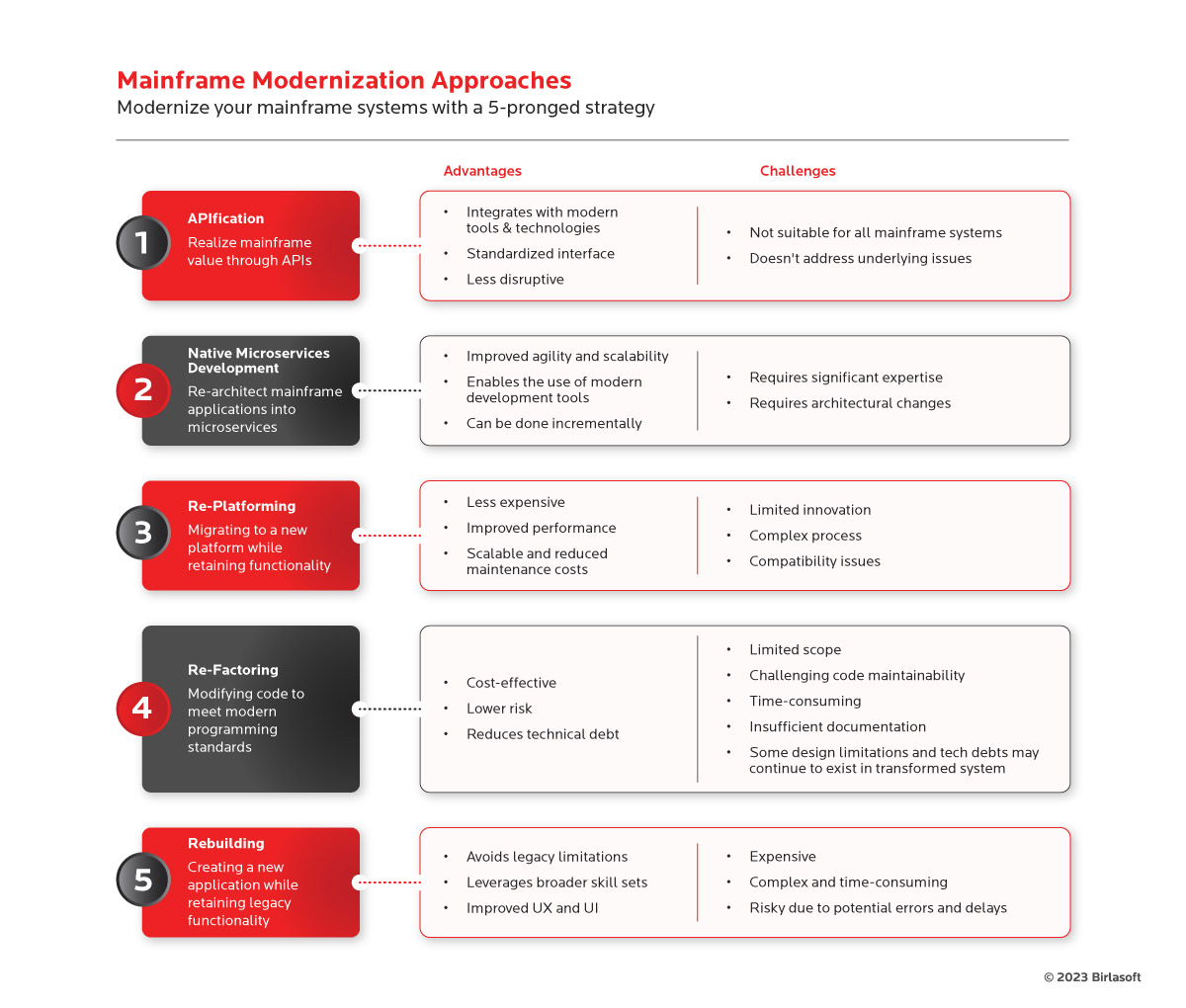Understanding the existing challenges with mainframe applications
Mainframes have been reliable and efficient, serving critical functions for large organizations, including banks, insurance companies, and governments. However, as the IT landscape evolves rapidly, mainframe applications face several challenges.
1. High cost of hardware/storage
One of the primary challenges of mainframes is the high cost of hardware and storage. Mainframes are designed for high performance and reliability, which requires specialized hardware and storage devices. These devices can be costly, and as data storage needs increase, so does the cost. Additionally, mainframes often require expensive software licenses and maintenance fees, making it difficult for businesses to justify the cost.
2. Shrinking talent pool of mainframe expertise
Many experts who have mastered this technology are aging and retiring, leaving a gap in the workforce. Finding new talent with the skills to maintain and enhance mainframe applications is becoming increasingly difficult, creating a shortage of mainframe experts that can impact the ability of companies to keep up with evolving technology and business needs.
3. Lack of business agility
Mainframes are known for their stability and reliability but are not typically associated with agility. Updating or changing mainframe applications can be time-consuming and complex. This can slow down a company's ability to respond to changing business needs or market trends. Mainframes tend to use older programming languages and software development practices, making integrating with newer technologies and platforms difficult.
4. Difficult maintainability
Maintaining mainframe applications can be complex and time-consuming, requiring specialized knowledge and expertise. With the complexity of modern business environments, keeping up with the maintenance and updates needed can be challenging, particularly when companies have limited access to mainframe expertise. The lack of standardization in mainframe applications also makes maintenance and updates more challenging.
5. Lack of documentation
Many mainframe applications have been operating for decades, and the original document may have been lost or outdated. This can make it difficult for new developers or IT staff to understand how the system works, leading to more extended learning curves and potentially costly errors. Maintaining and updating mainframe applications can become even more challenging without adequate documentation.
6. Outdated programming language
Mainframe applications often use programming languages that are no longer in widespread use, making it difficult to find developers with the required expertise. Additionally, it can be challenging to integrate mainframe applications with modern applications and platforms. Using outdated programming languages can also make adopting newer software development practices, such as Agile and DevOps, challenging.
7. Lack of Agile and DevOps processes
Mainframe development has historically followed a waterfall approach, with long development cycles and extensive testing. This can make it challenging to keep up with the fast pace of modern software development. Adopting Agile and DevOps processes can help organizations to deliver more value to their customers faster, but integrating these processes with existing mainframe applications can be challenging. The lack of standardization and documentation in mainframe applications can make it difficult to automate testing and deployment processes, slowing the adoption of Agile and DevOps.
Making a solid case for Mainframe Modernization
As businesses grow and evolve, so must their technology infrastructure. This is particularly true for legacy mainframe applications, which have been the backbone of business operations for decades. However, as technology evolves rapidly, these legacy systems are becoming expensive and challenging to maintain.
According to a report by Gartner, many enterprises struggle to determine the appropriate placement of their mainframe in their overall IT strategy. As a result, they may keep the mainframe without fully utilizing its capabilities or fail to allocate workloads to other platforms where they are better suited. This can lead to both inertia and hindrance of digital initiatives.
7 reasons why companies should consider mainframe modernization
1. Cost Savings
According to Gartner, the cost of maintaining legacy mainframe applications can be as high as 70% of an organization's IT budget. By modernizing mainframe applications, businesses can significantly reduce costs associated with hardware, software, and personnel. For example, modernizing mainframes can help companies use newer technologies, such as cloud computing, which can significantly reduce infrastructure costs.
2. Improved Agility
Modernizing mainframe applications can improve businesses’ agility by enabling them to respond quickly to changing business needs. As enterprises adopt newer technologies, such as cloud computing and artificial intelligence, modernized mainframes can integrate seamlessly with these technologies. This, in turn, allows businesses to improve their agility and respond more quickly to changing market conditions.
3. Enhanced Scalability
Mainframe modernization can help businesses scale their systems to meet increasing demands for data processing. With the growth of big data, businesses need to process vast amounts of information quickly and efficiently. Modernized mainframes can provide the scalability required to handle these demands, improving overall system performance.
4. Improved Security
Mainframe applications have always been known for their security and reliability. However, as cyber threats become more sophisticated, it is essential to maintain the safety of these systems. Modernized mainframes can integrate with newer security technologies, such as encryption and biometric authentication, providing businesses additional protection against cyber threats.
5. Access to New Features and Capabilities
Modernizing mainframes can provide businesses with access to new features and capabilities that were previously unavailable. For example, modern mainframe applications can take advantage of newer programming languages and technologies, improving the maintainability of applications. Additionally, modern mainframes can integrate with newer technologies, such as machine learning, allowing businesses to take advantage of the latest advancements in the data processing.
6. Improved Customer Experience
Modernizing mainframes can improve the customer experience by enabling businesses to process customer data more efficiently. For example, modernized mainframes can provide faster access to customer information, improving overall customer satisfaction. Additionally, modern mainframes can allow businesses to personalize customer experiences, tailoring services to individual customer needs.
7. Retaining Critical Business Knowledge
The qualified talent pool is shrinking as the workforce responsible for maintaining mainframes ages and retires. Modernized mainframes can provide better documentation and automated processes, improving knowledge retention across the organization.


